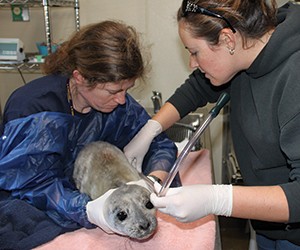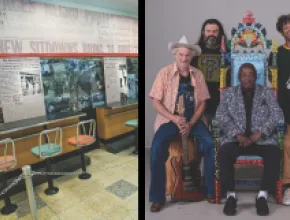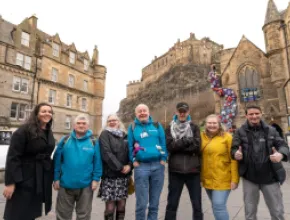Animals and corporate social responsibility (CSR) is a match made in planning heaven. Most facilities that deal with animals have special units for critters with critical needs—everything from emergency medical care to rescue, rehabilitation and lifelong support. Zoos, aquariums, pet rescue groups and wild animal rehabilitation groups all need money, support and, sometimes, volunteers.
“We are seeing an increasing number of organizations that want to give back,” says Lydia Hansen, co-owner of Destination Southwest, a destination management company in Albuquerque, N.M. “If you’re introducing a new piece of equipment, you may not have corporate social responsibility goals high on your priority list. But groups that are trying to position themselves or say something about what they stand for, they are much more interested in giving back. Giving back is a vital part of who they are, how they see themselves and how they want to be seen. We always include those kinds of opportunities in our client presentations.”
One of Hansen’s most popular CSR opportunities is the Tamaya Horse Rehabilitation Program. Sponsored by the Hyatt Regency Tamaya Resort and Spa, the program works to provide shelter, training and care for abandoned horses. Meeting attendees can help Tamaya’s professional wranglers by mucking stables, providing human interaction, grooming the horses, helping build additional stables and more. Tamaya is one of the largest Native American resorts in the nation, owned by the Santa Ana Pueblo and set between Santa Fe and Albuquerque.
“Planners and attendees know that profits from their events go back to the Pueblo people, not to a bank or real estate investment trust,” says Troy Wood, director of sales for the resort. “Knowing that you are benefiting real people and real animals adds a unique twist to your event here.”
Near San Francisco, The Marine Mammal Center (TMCC) has an active corporate volunteer program designed specifically for corporate and association groups. Volunteers are typically from local corporate sponsors such as Google, Williams-Sonoma and Triage Consulting, but visiting groups are just as welcome.
The typical volunteer program includes a classroom presentation on TMMC, one of the oldest and largest marine mammal rescue centers in North America, and a private tour of the center that focuses on the seals, sea lions and other mammals that have been rescued and are being treated so they can be released back into the wild. The hands-on work is sorting fish for patient meals, prepping fish for meals, washing dishes after feedings, and similar activities. The work is smelly, slimy and absolutely essential to keeping the center running and the rescued animals properly fed and nourished.
How can planners find an animal project that needs help? Just ask your DMC, Hansen says. Knowing the local CSR opportunities is just as much a part of their job as knowing the ins and outs of local hotels, restaurants, venues and service providers.






